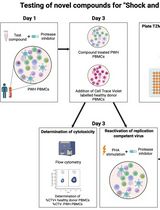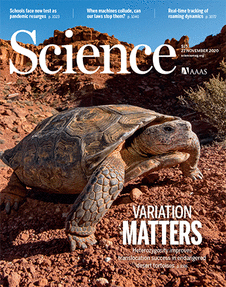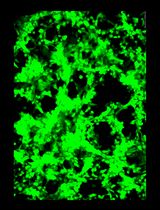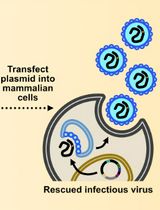- EN - English
- CN - 中文
VirScan: High-throughput Profiling of Antiviral Antibody Epitopes
Vir Scan: 抗病毒抗体表位的高通量分析
发布: 2022年07月05日第12卷第13期 DOI: 10.21769/BioProtoc.4464 浏览次数: 8147
评审: Longping Victor TseSuresh PantheeRita Marie Celine Meganck

相关实验方案

诱导型HIV-1库削减检测(HIVRRA):用于评估外周血单个核细胞中HIV-1潜伏库清除策略毒性与效力的快速敏感方法
Jade Jansen [...] Neeltje A. Kootstra
2025年07月20日 2250 阅读
Abstract
Profiling the specificities of antibodies can reveal a wealth of information about humoral immune responses and the antigens they target. Here, we present a protocol for VirScan, an application of the phage immunoprecipitation sequencing (PhIP-Seq) method for profiling the specificities of human antiviral antibodies. Accompanying this protocol is a video of the experimental procedure. VirScan and, more generally, PhIP-Seq are techniques that enable high-throughput antibody profiling by combining high-throughput DNA oligo synthesis and bacteriophage display with next-generation sequencing. In the VirScan method, human sera samples are screened against a library of peptides spanning the entire human viral proteome. Bound phage are immunoprecipitated and sequenced, identifying the viral peptides recognized by the antibodies. VirScan Is a powerful tool for uncovering individual viral exposure histories, mapping the epitope landscape of viruses of interest, and studying fundamental mechanisms of viral immunity.
Graphical abstract:

Background
VirScan (Xu et al., 2015) is based on a general technology called phage immunoprecipitation sequencing (PhIP-Seq) (Larman et al., 2011; Mohan et al., 2018; Mandel-Brehm et al., 2019, Garrett et al., 2020). In PhIP-Seq, a proteome-scale library of peptides is designed, and DNA oligos encoding these peptides are synthesized and cloned into a T7 bacteriophage display system. Each phage encodes the sequence of one peptide in its genome and displays the same peptide on its surface, thus linking genotype with phenotype (Smith and Petrenko, 1997; Kosuri et al., 2010). For each PhIP-Seq reaction, the phage display library is mixed with a sample containing human antibodies, and the antibodies bind to their cognate epitopes on the phage surface. Then the phage-antibody complexes are immunoprecipitated and unbound phage are washed away. PCR amplification and high-throughput sequencing of the insert DNA from bound phage reveal the peptides targeted by antibodies in the sample. Whereas the original PhIP-Seq assays were performed using a phage display library of peptides derived from the human proteome to detect autoantibodies, VirScan employs a library of peptides derived from the human virome to identify the specificities of antibodies targeting viral antigens.
A comparison of the advantages and disadvantages of PhIP-Seq relative to peptide or protein microarrays for high-throughput epitope profiling is provided inMohan et al. (2018). In brief, PhIP-Seq enables higher throughput, less expensive, and more highly programmable assays relative to peptide and whole protein microarrays. A disadvantage of PhIP-Seq compared with protein microarrays is that the experimental procedure takes longer to perform since its readout involves next-generation sequencing. As with all peptide-based epitope profiling methods, PhIP-Seq generally does not enable detection of discontinuous epitopes or epitopes that involve post-translational modifications.
A comprehensive article describing the PhIP-Seq protocol has been published (Mohan et al., 2018) and is a valuable resource to those interested in using VirScan technology. The present article serves to supplement that resource by presenting videos of the experimental protocol (Videos 1–5) and including information relevant for VirScan-specific data analysis (Supplementary materials). This protocol does not contain information related to the design and generation of the VirScan phage display library, as these methods have been covered in depth byMohan et al. (2018) and Xu et al. (2015). This article assumes that the researcher has access to the VirScan library and focuses on the downstream experimental procedures, namely, phage-antibody complex formation, immunoprecipitation, and preparation of DNA libraries for next-generation sequencing, which are also depicted in the videos (Videos 1–5). Further, this protocol covers VirScan-specific data analysis steps, including hits by virus calculation, virus score calculation, and determination of virus seropositivity.
The VirScan protocol may be modified with supplemental libraries, alternative immunoprecipitation reagents, and input samples other than human serum to address a broader set of scientific questions. Alanine scanning and saturation mutagenesis libraries may be designed to enable high-resolution mapping of antibody epitopes, as performed in Shrock et al. (2020) and Chen et al. (2021). The standard immunoprecipitation reagents, Protein A and Protein G, may be replaced with isotype-specific secondary antibodies to profile antibody isotypes other than IgG, such as IgA or IgE, as performed in Shrock et al. (2020) and Chen et al. (2021). The protocol may be used with serum samples from several mammalian species other than humans, including mice and non-human primates, since the Protein A and Protein G bind to mouse and non-human primate IgG as well as human IgG (Borriello et al., 2022). Finally, antibody-containing samples other than serum, including saliva, breast milk, and supernatant from cultured B cells, may be used as input samples for VirScan.
VirScan has been used successfully in many applications, including to estimate the number of viral species to which individuals have been exposed (Xu et al., 2015); to show that infection by measles virus diminishes the preexisting antibody repertoire, leaving individuals vulnerable to reinfection to pathogens (Mina et al., 2019); to study the maternally derived antibody repertoire in human infants (Pou et al., 2019); to investigate the effects of CART therapy directed against CD19 on the antiviral antibody repertoire (Hill et al., 2019); to uncover a putative viral etiology of the rare neurological condition Acute Flaccid Myelitis (Schubert et al., 2019), to map SARS-CoV-2 linear epitopes with high resolution and determine humoral immune correlates of COVID-19 severity (Shrock et al., 2020; Zamecnik et al., 2020), and to provide evidence that Epstein-Barr virus infection increases risk for subsequent development of multiple sclerosis (Bjornevik et al., 2022).
Materials and Reagents
Pipette Tips SR LTS 20 µL F 960A/5 (Rainin, catalog number: 17005860), storage temperature: room temperature
Pipette Tips SR LTS 200 µL F 960A/5 (Rainin, catalog number: 17005859), storage temperature: room temperature
Pipette Tips SR LTS 1,200 µL F 768A/4 (Rainin, catalog number: 17007084), storage temperature: room temperature
Disposable Serological Pipets, Polystyrene, Sterile, Plugged, 5 mL (e.g., VWR, catalog number: 89130-896), storage temperature: room temperature
Disposable Serological Pipets, Polystyrene, Sterile, Plugged, 10 mL (e.g., VWR, catalog number: 89130-898), storage temperature: room temperature
Disposable Serological Pipets, Polystyrene, Sterile, Plugged, 25 mL (e.g., VWR, catalog number: 89130-900), storage temperature: room temperature
Disposable Serological Pipets, Polystyrene, Sterile, Plugged, 50 mL (e.g., VWR, catalog number: 89130-902), storage temperature: room temperature
Reagent Reservoirs, Sterile (e.g., Corning, Costar, catalog number: 4870), storage temperature: room temperature
Sterile Filter Storage Bottles/Receivers (e.g., Thermo Fisher, Nalgene, catalog number: 455-0500), storage temperature: room temperature
Deep Well Plate, 96-well, PP, 1.1 mL, Standard, U-Bottom (Cole-Parmer, BrandTech, catalog number: EW-07904-04), storage temperature: room temperature
Kimtech Science Kimwipes Delicate Task Wipes (Kimberly-Clark, catalog number: 34155), storage temperature: room temperature
Sealing paddle (USA Scientific, catalog number: 2928-7355), storage temperature: room temperature
MicroAmp Optical Adhesive Film (Thermo Fisher, Applied Biosystems, catalog number: 4311971), storage temperature: room temperature
Colored Labeling Tape, Rainbow Pack (Fisher Scientific, Fisherbrand, catalog number: 15-901-10R), storage temperature: room temperature
PCR Plate, 96-well (e.g., VWR, catalog number: 82006-704), storage temperature: room temperature
Bravo Lab Disposable Pipette Tips (Agilent, catalog number: 19477-022), storage temperature: room temperature
Note: These are necessary if performing magnetic bead washes using the Agilent Bravo.
Nunc 96-Well Polypropylene DeepWell Storage Plates, sterile (Thermo Fisher, Thermo Scientific, catalog number: 260251), storage temperature: room temperature
Nalgene Disposable Polypropylene Robotic Reservoirs, sterile (Thermo Fisher, Thermo Scientific, catalog number: 1200-1301), storage temperature: room temperature
Note: These are necessary if performing magnetic bead washes using the Agilent Bravo.
Corning 96-well Clear V-Bottom 2 mL Polypropylene Deep Well Plate, sterile (Corning, catalog number: 3960), storage temperature: room temperature
Note: These are necessary if performing magnetic bead washes using the Agilent Bravo.
MicroAmp Fast Optical 96-Well Reaction Plate with Barcode, 0.1 mL (Thermo Fisher, Applied Biosystems, catalog number: 4346906), storage temperature: room temperature
Note: These are necessary if performing qPCR using the Applied Biosystems Fast 7500 system.
Qubit Assay Tubes (Thermo Fisher, Invitrogen, catalog number: Q32856), storage temperature: room temperature
(Optional) IgG (Total) Human ELISA Kit (e.g., Thermo Fisher, Invitrogen, catalog number: BMS2091), storage temperature: 4°C
Tris Buffered Saline with Tween 20 (TBST-10X) (Cell Signaling, catalog number: 9997), storage temperature: room temperature
Bovine Serum Albumin (BSA) (VWR, catalog number: 0332-500G), storage temperature: 4°C
PBS, pH 7.4 (e.g., Thermo Fisher, catalog number: 10010023), storage temperature: room temperature
VirScan T7 phage display library (Available upon request, storage temperature: -80°C)
Note: Based on T7Select Packaging Kit (Millipore-Sigma, catalog number: 70014) storage temperature: -80°C.
UltraPure 1M Tris-HCI, pH 8.0 (Thermo Fisher, Invitrogen, catalog number: 15568025), storage temperature: 4°C
NaCl (5 M), RNase-free (Thermo Fisher, Invitrogen, catalog number: AM9759), storage temperature: room temperature
Magnesium sulfate solution (Millipore Sigma, catalog number: M3409-100ML), storage temperature: room temperature
Chloramphenicol (Millipore Sigma, catalog number: C0378-100G), storage temperature: room temperature for powder or -20°C for reconstituted solution
Kanamycin B sulfate salt (Millipore Sigma, catalog number: B5264-250MG), storage temperature: -20°C for powder and for reconstituted solution
NP-40 Surfact-Amps Detergent Solution (Thermo Fisher, catalog number: 85124), storage temperature: room temperature
Dynabeads Protein A for Immunoprecipitation (Thermo Fisher, Invitrogen, catalog number: 10008D), storage temperature: 4°C
Dynabeads Protein G for Immunoprecipitation (Thermo Fisher, Invitrogen, catalog number: 10009D), storage temperature: 4°C
UltraPure 1 M Tris-HCI Buffer, pH 7.5 (Thermo Fisher, Invitrogen, catalog number: 15567027), storage temperature: 4°C
UltraPure DNase/RNase-Free Distilled Water (Thermo Fisher, Invitrogen, catalog number: 10977023), storage temperature: room temperature
Q5 Hot Start High-Fidelity DNA Polymerase (New England Biolabs, catalog number: M0493L) storage temperature: -20°C
dNTP Set (100 mM) (Thermo Fisher, Invitrogen, catalog number: 10297018), storage temperature: -20°C
TaqMan Gene Expression Master Mix (Thermo Fisher, Applied Biosystems, catalog number: 4369016), storage temperature: 4°C
UltraPure Agarose (Thermo Fisher, Invitrogen, catalog number: 16500100), storage temperature: room temperature
UltraPure DNA Typing Grade 50× TAE Buffer (Thermo Fisher, Invitrogen, catalog number: 24710030), storage temperature: room temperature
QIAquick Gel Extraction Kit (250) (QIAGEN, catalog number: 28706), storage temperature: room temperature
QIAquick PCR Purification Kit (250) (QIAGEN, catalog number: 28106), storage temperature: room temperature
Qubit dsDNA HS Assay Kit (Thermo Fisher, Invitrogen, catalog number: Q32851), storage temperature: mixed, room temperature and 4°C
HPLC-purified primers (IDT, storage temperature: -20°C)
Primer name Primer sequence (5’ – 3’) IS7 ACACTCTTTCCCTACACGACTCCAGTCAGGTGTGATGCTC IS8 GTGACTGGAGTTCAGACGTGTGCTCTTCCGATCCGAGCTTATCGTCGTCATCC IS4 AATGATACGGCGACCACCGAGATCTACACTCTTTCCCTACACGACTCCAGT Index primer CAAGCAGAAGACGGCATACGAGATNNNNNNNGTGACTGGAGTTCAGACGTGT 5’NEST-qPCR TCGGGGATCCAGGAATTC 3’NEST-qPCR CGTCGTCATCCTTGTAATCG NEST_probe /56-FAM/TAATCGCGG/ZEN/CCGCAAGCTTGTC/3IABkFQ/ T7-Illumina-READ1-A TGCTCGGGGATCCAGGAATTCCGCTGCGT Note: Orthogonal 7 nt barcodes for the Index primer are available upon request.
Phage extraction buffer (Recipe listed below), storage temperature: 4°C
PhIP-Seq Wash Buffer (Recipe listed below), storage temperature: 4°C
Equipment
Pipet-Lite Multi Pipette L12-20XLS+ (Rainin, catalog number: 17013808)
Pipet-Lite Multi Pipette L12-200XLS+ (Rainin, catalog number: 17013810)
E4 Pipette Multi E12-1200XLS+ (Rainin, catalog number: 17014499)
Portable Pipet-Aid XP Pipette Controller (Drummond, catalog number: 4-000-101)
Rotator (e.g., Barnstead/Thermolyne, model: 415110)
Benchtop Centrifuge with swinging-bucket rotor assembly and microplate carrier (e.g., Beckman Coulter, model: Allegra X-15R or Avanti J-15R, swinging-bucket rotor assembly: SX4750A or JS-4.750 , microplate carrier: SX4750)
Bravo NGS Automated Liquid Handling Platform (Agilent, catalog number: G5573AA)
96-Well Microtiter Plate Magnetic Separation Rack (NEB, catalog number: S1511S)
Note: This is necessary if performing magnetic bead washes manually.
Thermal cycler (e.g., Bio-Rad, model: C1000 Touch with 96-well Fast Reaction Module, catalog number: 1851196)
96-well Aluminum Block For 0.2 mL Tubes (Universal Medical, catalog number: 81001)
7500 Fast Dx Real-Time PCR Instrument, with laptop computer (Thermo Fisher, Applied Biosystems, catalog number: 4406984)
Qubit 4 Fluorometer (Thermo Fisher, Invitrogen, catalog number: Q33238)
Software
bowtie (Langmead et al., 2009)
samtools (Li et al., 2009)
python (Python Software Foundation. Python Language Reference, version 2.7. Available at http://www.python.org)
gcc (GNU Compiler Collection, version 6.2.0. Documentation at https://gcc.gnu.org/onlinedocs/gcc.pdf)
R (R Core Team, 2017)
Procedure
文章信息
版权信息
© 2022 The Authors; exclusive licensee Bio-protocol LLC.
如何引用
Shrock, E. L., Shrock, C. L. and Elledge, S. J. (2022). VirScan: High-throughput Profiling of Antiviral Antibody Epitopes . Bio-protocol 12(13): e4464. DOI: 10.21769/BioProtoc.4464.
分类
生物工程 > 生物医学工程
微生物学 > 微生物-宿主相互作用 > 病毒
分子生物学 > DNA > 诱/突变
您对这篇实验方法有问题吗?
在此处发布您的问题,我们将邀请本文作者来回答。同时,我们会将您的问题发布到Bio-protocol Exchange,以便寻求社区成员的帮助。
提问指南
+ 问题描述
写下详细的问题描述,包括所有有助于他人回答您问题的信息(例如实验过程、条件和相关图像等)。
Share
Bluesky
X
Copy link










